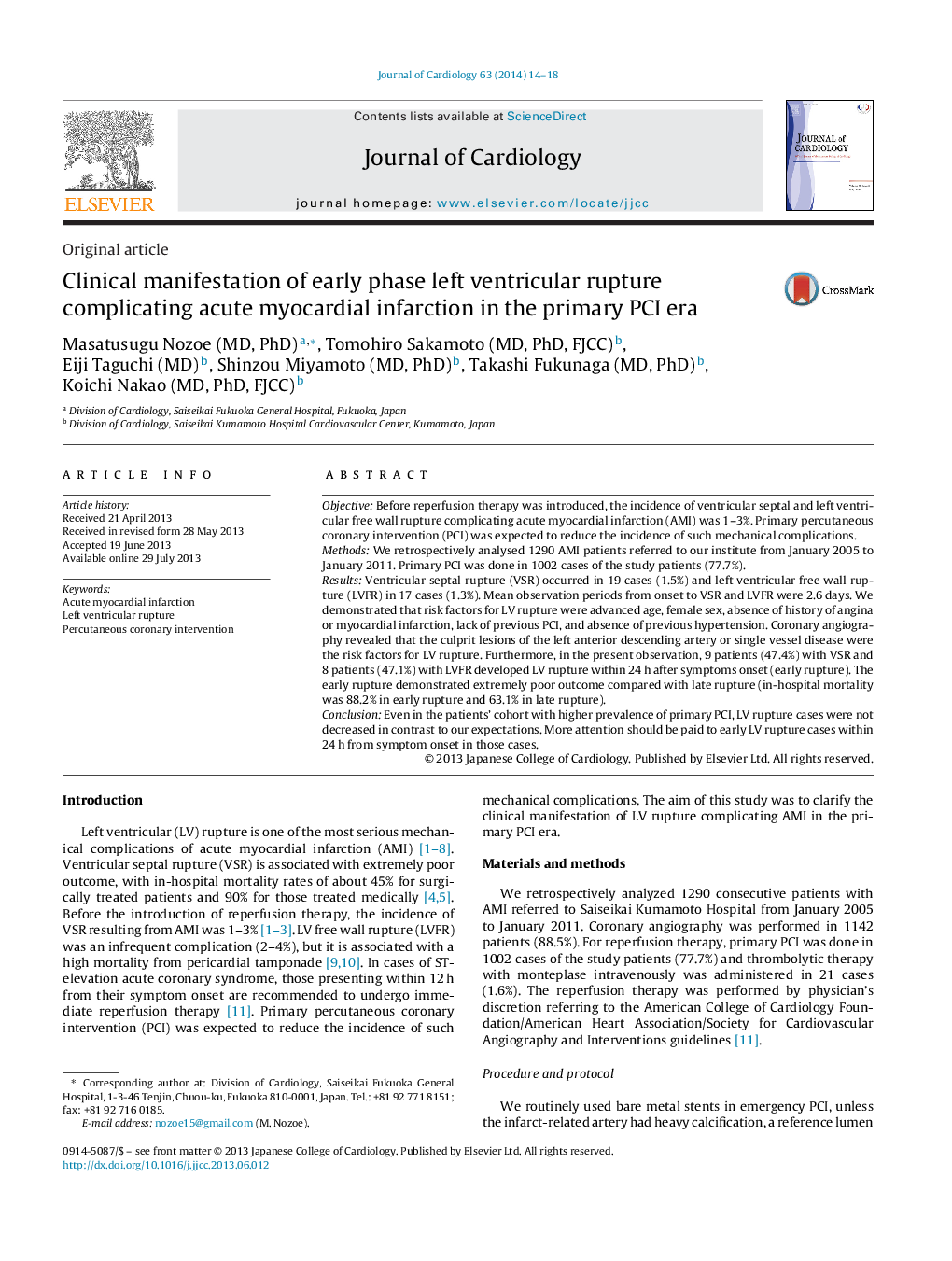| Article ID | Journal | Published Year | Pages | File Type |
|---|---|---|---|---|
| 5984287 | Journal of Cardiology | 2014 | 5 Pages |
ObjectiveBefore reperfusion therapy was introduced, the incidence of ventricular septal and left ventricular free wall rupture complicating acute myocardial infarction (AMI) was 1-3%. Primary percutaneous coronary intervention (PCI) was expected to reduce the incidence of such mechanical complications.MethodsWe retrospectively analysed 1290 AMI patients referred to our institute from January 2005 to January 2011. Primary PCI was done in 1002 cases of the study patients (77.7%).ResultsVentricular septal rupture (VSR) occurred in 19 cases (1.5%) and left ventricular free wall rupture (LVFR) in 17 cases (1.3%). Mean observation periods from onset to VSR and LVFR were 2.6 days. We demonstrated that risk factors for LV rupture were advanced age, female sex, absence of history of angina or myocardial infarction, lack of previous PCI, and absence of previous hypertension. Coronary angiography revealed that the culprit lesions of the left anterior descending artery or single vessel disease were the risk factors for LV rupture. Furthermore, in the present observation, 9 patients (47.4%) with VSR and 8 patients (47.1%) with LVFR developed LV rupture within 24Â h after symptoms onset (early rupture). The early rupture demonstrated extremely poor outcome compared with late rupture (in-hospital mortality was 88.2% in early rupture and 63.1% in late rupture).ConclusionEven in the patients' cohort with higher prevalence of primary PCI, LV rupture cases were not decreased in contrast to our expectations. More attention should be paid to early LV rupture cases within 24Â h from symptom onset in those cases.
